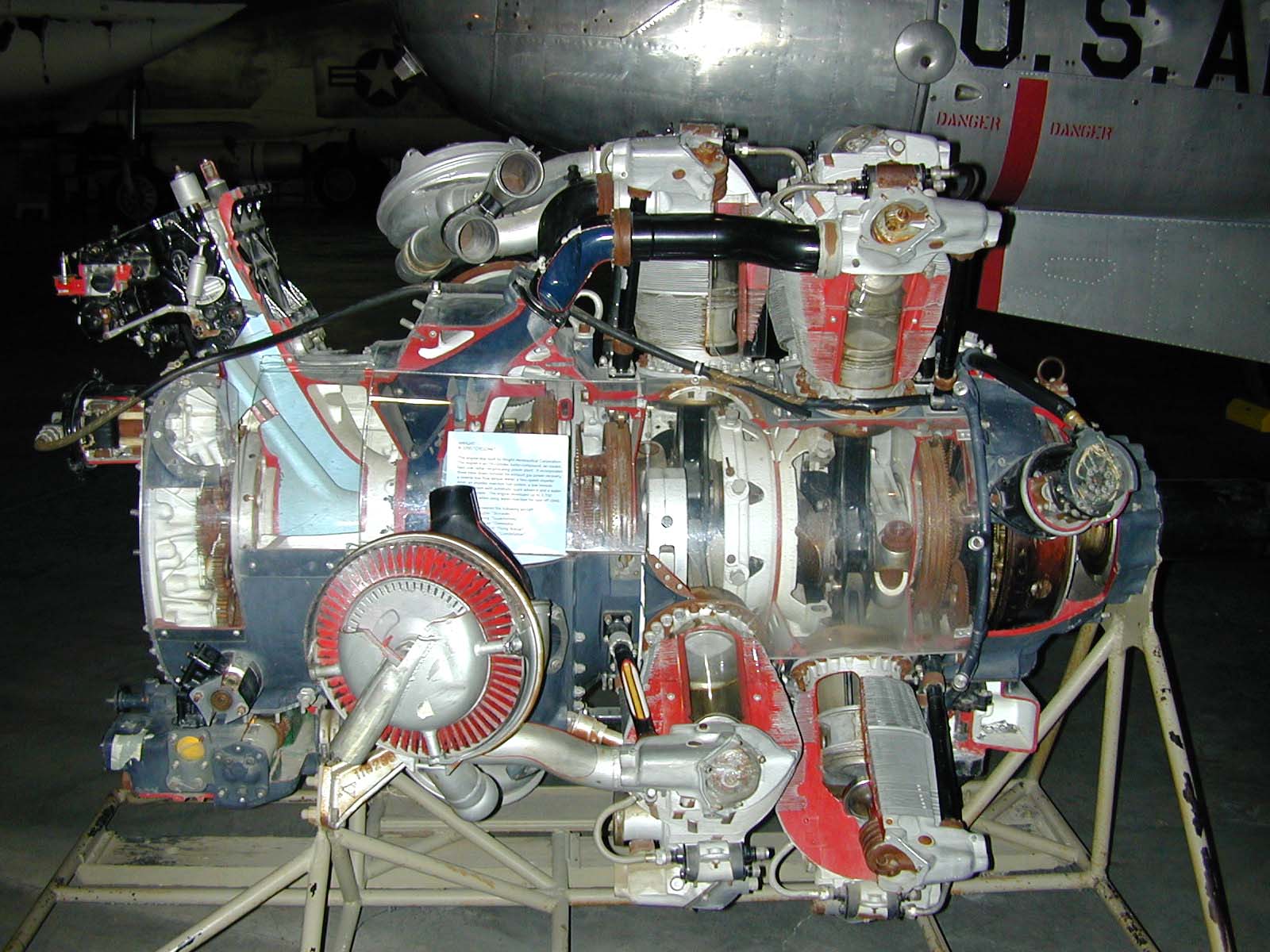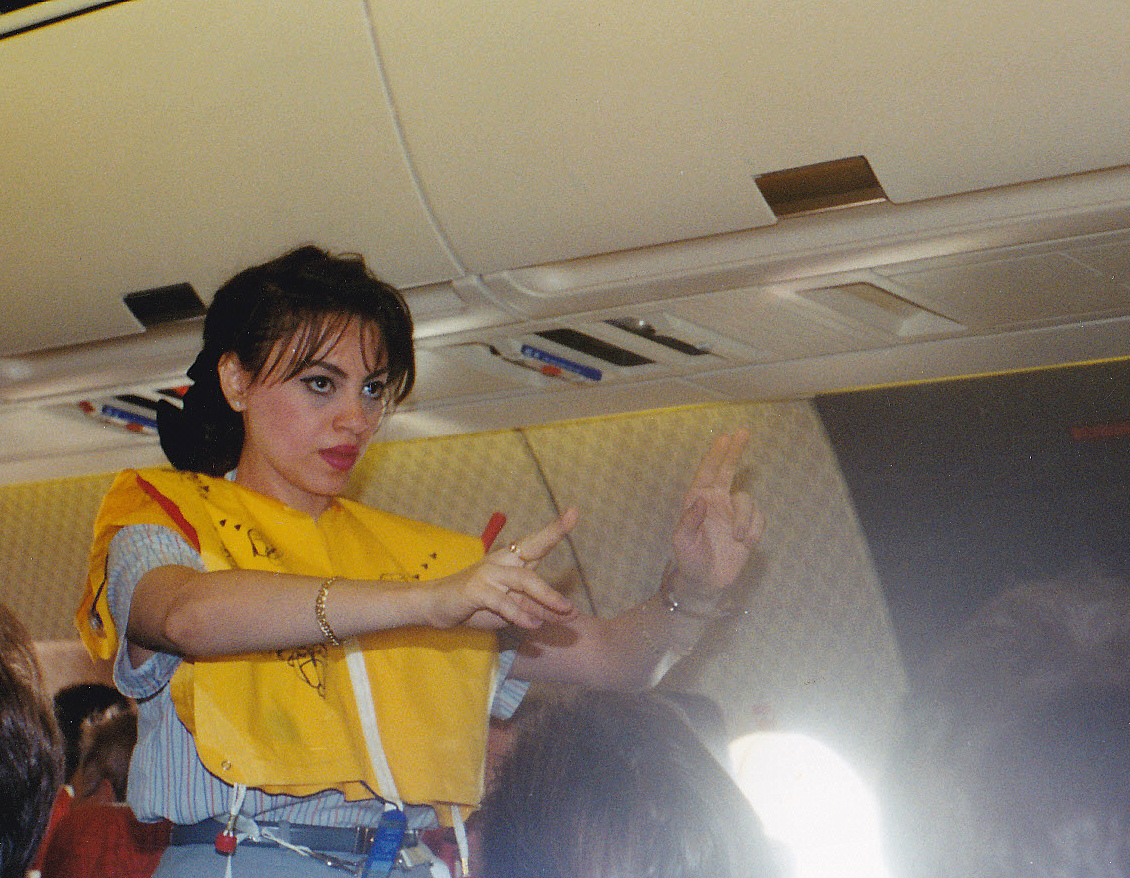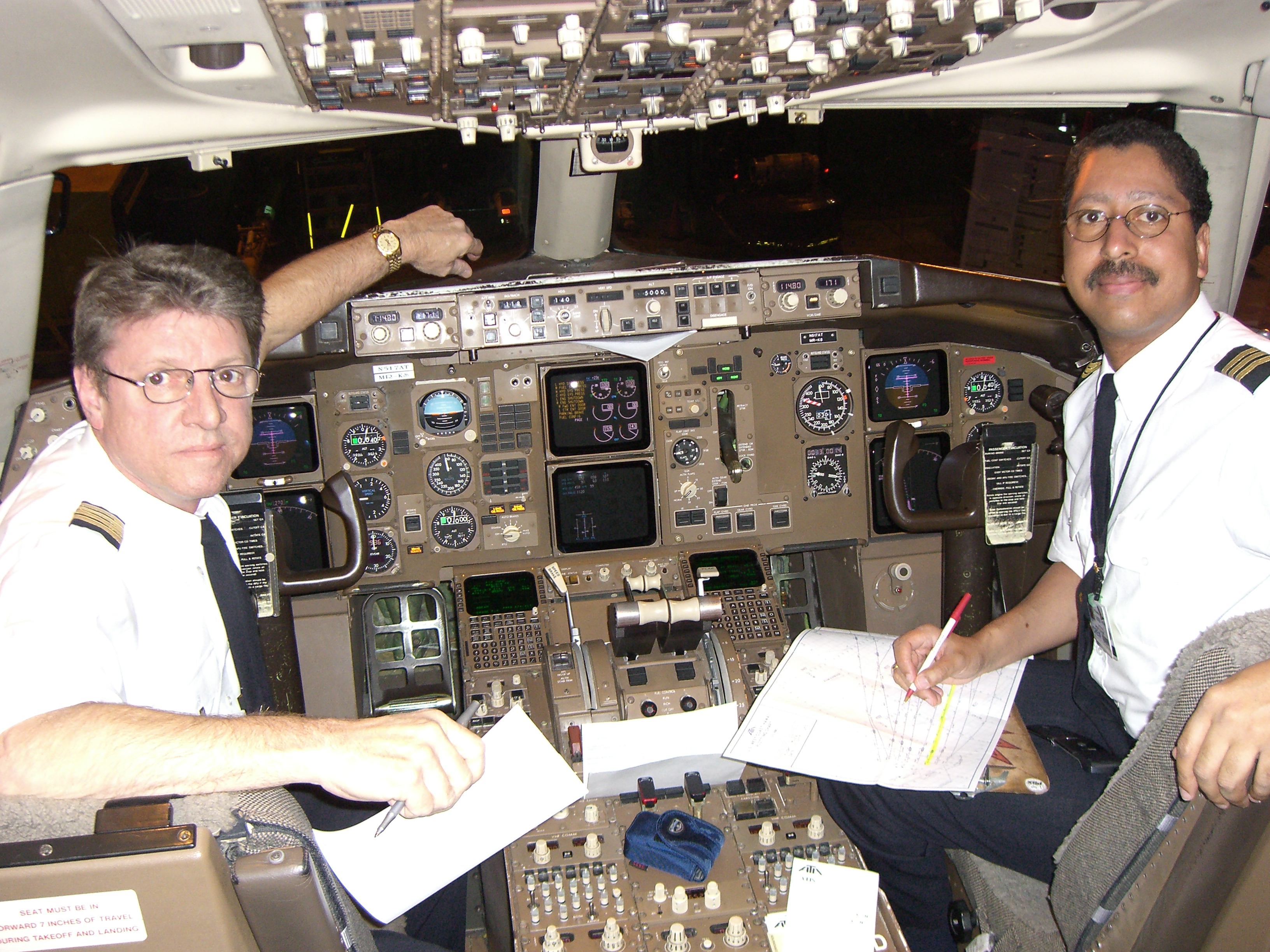|
1965 Carmel Mid-air Collision
The 1965 Carmel mid-air collision occurred on December 4, 1965, when Trans World Airlines Flight 42, a Boeing 707, Boeing 707-131B en route from San Francisco International Airport to John F. Kennedy International Airport, over Carmel, New York, United States Mid-air collision, collided in mid-air with Eastern Air Lines Flight 853, a Lockheed Super Constellation en route from Boston Logan International Airport to Newark International Airport, New Jersey. TWA Flight 42 made an emergency landing at John F. Kennedy International Airport, while Eastern Air Lines Flight 853 was forced to make a crash landing on Hunt Mountain in North Salem, New York. Three passengers died, plus the Constellation's pilot, Captain Charles J. White, who had returned to the aircraft's cabin to help the last passenger evacuate. Background Aircraft Boeing aircraft and crew The Trans World Airlines, TWA aircraft involved, manufactured by Boeing in 1962, was a Boeing 707-131B Aircraft registration, r ... [...More Info...] [...Related Items...] OR: [Wikipedia] [Google] [Baidu] |
Mid-air Collision
In aviation, a mid-air collision is an aviation accident, accident in which two or more aircraft come into unplanned contact during flight. The potential for a mid-air collision is increased by Aviation communication, miscommunication, mistrust, error in Air navigation, navigation, deviations from flight plans, lack of situational awareness, and the lack of Traffic collision avoidance system, collision-avoidance systems. Although a rare occurrence in general due to the vastness of open space available, collisions often happen near or at airports, where large volumes of aircraft are spaced more closely than in general flight. First recorded collision The first recorded collision between aircraft occurred at the "Milano Circuito Aereo Internazionale" meeting held between 24 September and 3 October 1910 in Milan, Italy. On 3 October, Frenchman René Thomas (racing driver), René Thomas, flying the Antoinette IV monoplane, collided with British Army Captain Bertram Dickson by r ... [...More Info...] [...Related Items...] OR: [Wikipedia] [Google] [Baidu] |
Lockheed Super Constellation
The Lockheed L-1049 Super Constellation is an American aircraft, a member of the Lockheed Constellation aircraft line. The aircraft was colloquially referred to as the Super Connie. The L-1049 was Lockheed's response to the successful Douglas DC-6 airliner, first flying in 1950. The aircraft was produced for both the United States Navy as the WV / R7V and U.S. Air Force as the C-121 for transport, electronics, and airborne early warning and control aircraft. Development Beginning in 1943, Lockheed planned stretched variants of the Constellation family. The first was the L-049 with a fuselage lengthened by and the second the L-749 stretched . Douglas launched a stretched version of its DC-6 airliner as a cargo transport, designated DC-6A, for both military and civilian operators. Douglas was soon to launch a passenger version (the DC-6B) of this new aircraft. The DC-6B could carry 23 more passengers than Lockheed's current production L-749 Constellation. In 1950, Lockhee ... [...More Info...] [...Related Items...] OR: [Wikipedia] [Google] [Baidu] |
Danbury Municipal Airport
Danbury Municipal Airport is a public use general aviation and commercial airport located three miles (5 km) southwest of the central business district of Danbury, in Fairfield County, Connecticut, United States. The airport opened in 1930. It is currently run by the City of Danbury under the management of Michael Safranek. It is included in the Federal Aviation Administration (FAA) National Plan of Integrated Airport Systems for 2017–2021, in which it is categorized as a regional reliever airport facility. The Reliant Air building burned down on the evening of September 12, 2007. The hangar was located on the northeast side of the airport. It has since been rebuilt and Reliant Air continues in business. History In 1928, local pilots purchased a 60-acre tract near the Danbury Fair, known as Tucker's Field. This property was leased to the town in 1930 and became the Danbury Municipal Airport. Facilities and aircraft Danbury Municipal Airport covers and has t ... [...More Info...] [...Related Items...] OR: [Wikipedia] [Google] [Baidu] |
Flight Attendant
A flight attendant is a member of the aircrew whose primary responsibility is ensure the safety of passengers in the cabin of an aircraft across all stages of flight. Their secondary duty is to see to the comfort of passengers. Flight attendants are also known as a steward () or stewardess (), or air host () or air hostess () and are collectively referred to as cabin crew. History The role of a flight attendant derives from that of similar positions on passenger ships or Passenger railroad car, passenger trains, but has more direct involvement with passengers because of the confined quarters on aircraft. Additionally, the job of a flight attendant revolves around safety to a much greater extent than those of similar staff on other forms of transportation. Flight attendants on board a flight collectively form a ''cabin crew'', as distinguished from Aircraft pilot, pilots and Flight engineer, engineers in the cockpit. The German Heinrich Kubis was the world's first flight a ... [...More Info...] [...Related Items...] OR: [Wikipedia] [Google] [Baidu] |
VORTAC
Very High Frequency Omnidirectional Range Station (VOR) is a type of short-range VHF radio navigation system for aircraft, enabling aircraft with a VOR receiver to determine the azimuth (also radial), referenced to magnetic north, between the aircraft to/from fixed VOR ground radio beacons. VOR and the first DME(1950) system (referenced to 1950 since different from today's DME/N) to provide the slant range distance, were developed in the United States as part of a U.S. civil/military program for Aeronautical Navigation Aids in 1945. Deployment of VOR and DME(1950) began in 1949 by the U.S. CAA (Civil Aeronautics Administration). ICAO standardized VOR and DME(1950) in 1950 in ICAO Annex ed.1. Frequencies for the use of VOR are standardized in the very high frequency (VHF) band between 108.00 and 117.95 MHz Chapter 3, Table A. To improve azimuth accuracy of VOR even under difficult siting conditions, Doppler VOR (DVOR) was developed in the 1960s. VOR is according to ICAO ... [...More Info...] [...Related Items...] OR: [Wikipedia] [Google] [Baidu] |
Wright R-3350 Duplex-Cyclone
The Wright R-3350 Duplex-Cyclone is an American twin-row, supercharged, air-cooled, radial aircraft engine with 18 cylinders displacing nearly . Power ranged from , depending on model. Developed before World War II, the R-3350's design required a long time to mature, and was still experiencing problems with reliability when used to power the Boeing B-29 Superfortress. After the war, the engine had matured sufficiently to be used in many civilian airliners, notably in its turbo-compound forms, and was used in the Lockheed L-1049 Super Constellation airliners into the 1950s. Its main rival was the , Pratt & Whitney R-4360 Wasp Major, which first ran some seven years after the Duplex-Cyclone. The engine is commonly used on Hawker Sea Fury and Grumman F8F Bearcat Unlimited Class Racers at the Reno Air Races. Design and development In 1927, Wright Aeronautical introduced its "Cyclone" engine, which powered a number of designs in the 1930s. After merging with Curtiss to become ... [...More Info...] [...Related Items...] OR: [Wikipedia] [Google] [Baidu] |
Flight Stewardess
A flight attendant is a member of the aircrew whose primary responsibility is ensure the safety of passengers in the cabin of an aircraft across all stages of flight. Their secondary duty is to see to the comfort of passengers. Flight attendants are also known as a steward () or stewardess (), or air host () or air hostess () and are collectively referred to as cabin crew. History The role of a flight attendant derives from that of similar positions on passenger ships or passenger trains, but has more direct involvement with passengers because of the confined quarters on aircraft. Additionally, the job of a flight attendant revolves around safety to a much greater extent than those of similar staff on other forms of transportation. Flight attendants on board a flight collectively form a ''cabin crew'', as distinguished from pilots and engineers in the cockpit. The German Heinrich Kubis was the world's first flight attendant, in 1912 aboard a Zeppelin. Kubis first attende ... [...More Info...] [...Related Items...] OR: [Wikipedia] [Google] [Baidu] |
Flight Engineer
A flight engineer (FE), also sometimes called an air engineer, is a member of an aircraft's flight crew who is responsible for monitoring and operating its complex aircraft systems. In the early era of aviation, the position was sometimes referred to as the "air mechanic". Flight engineers can still be found on some larger Fixed-wing aircraft, fixed-wing airplanes and helicopters. A similar crew position exists on some spacecraft. In most modern aircraft, their complex systems are both monitored and adjusted by electronic microprocessors and computers, resulting in the elimination of the flight engineer's position. In earlier days, most larger aircraft were designed and built with a flight engineer's position. For U.S. civilian aircraft that require a flight engineer as part of the crew, the flight engineer must possess an FAA Flight Engineer Certificate with reciprocating, turboprop, or turbojet ratings appropriate to the aircraft. Whereas the four-engine Douglas DC-4 did not re ... [...More Info...] [...Related Items...] OR: [Wikipedia] [Google] [Baidu] |
First Officer (aviation)
In aviation, the first officer (FO), also called co-pilot, is a Aircraft pilot, pilot in addition to the Pilot in command, captain, who is the legal commander. In the event of incapacitation of the captain, the first officer will assume command of the aircraft. Requirement Historically, large aircraft had several personnel on the flight deck, such as a Air navigator, navigator, a flight engineer, and a dedicated radio operator. Improvements in automation and reliability have reduced this to two. Many aircraft require a minimum of two flight crew. The minimum crew requirement will be stated in the aircraft manuals by the manufacturer. In the European Union, all turbo-propeller aeroplanes with a maximum approved passenger seating configuration of more than nine and all turbo-jet aeroplanes require two pilots.EU OPS (965) Subpart N, Ops 1.940 Composition of flight crew Role Control of the aircraft is normally shared equally between the first officer and the captain, with one pilot ... [...More Info...] [...Related Items...] OR: [Wikipedia] [Google] [Baidu] |
Pilot In Command
The pilot in command (PIC) of an aircraft is the person aboard an aircraft who is ultimately responsible for its operation and safety during flight. This would be the captain in a typical two- or three- pilot aircrew, or "pilot" if there is only one certificated and qualified pilot at the controls of an aircraft. The PIC must be legally certificated (or otherwise authorized) to operate the aircraft for the specific flight and flight conditions, but need not be actually manipulating the controls at any given moment. The PIC is the person legally in charge of the aircraft and its flight safety and operation, and would normally be the primary person liable for an infraction of any flight rule. The strict legal definition of PIC may vary slightly from country to country. The International Civil Aviation Organization (ICAO) definition is: "The pilot responsible for the operation and safety of the aircraft during flight time." In Annex 2, "Rules of the Air", under par. "2.3.1 Responsi ... [...More Info...] [...Related Items...] OR: [Wikipedia] [Google] [Baidu] |
Pratt & Whitney JT3D
The Pratt & Whitney JT3D is an early turbofan aircraft engine derived from the Pratt & Whitney J57, Pratt & Whitney JT3C turbojet. It was first run in 1958 and was first flown in 1959 under a B-45 Tornado test aircraft. Over 8,000 JT3Ds were produced between 1959 and 1985. Most JT3D engines still in service today are used on military aircraft, where the engine is referred to by its US military designation of TF33. Design and development Aware of the competition from the Rolls-Royce Conway turbofan, Pratt & Whitney decided to develop the JT3D turbofan from the JT3C turbojet for later deliveries of the Boeing 707 and the Douglas DC-8, then nearing entry into service. A 2-stage fan replaced the first 3 stages of the 9-stage JT3C LP compressor. On the LP turbine, the second stage was enlarged and a third stage added. Unlike GE with the CJ805-23, Pratt & Whitney had not undertaken any transonic fan research prior to designing the JT3D, so they were unable to incorporate a single stage ... [...More Info...] [...Related Items...] OR: [Wikipedia] [Google] [Baidu] |









